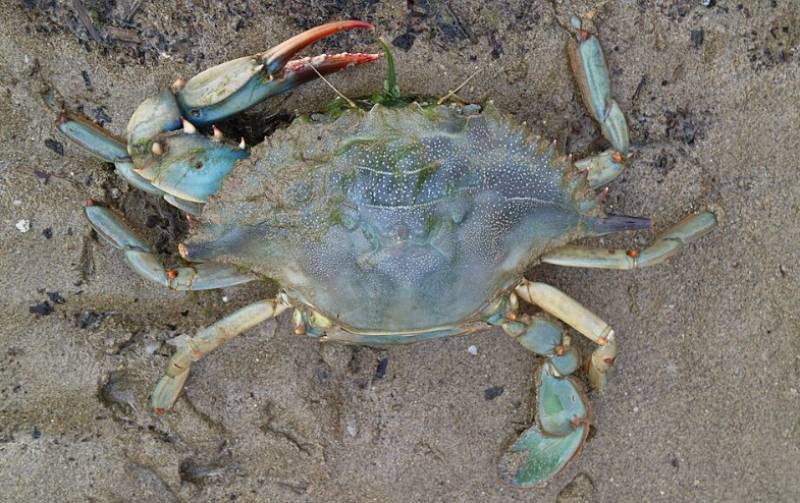Date Published: 04/06/2025
The blue crab invades Cádiz: an aggressive newcomer shaking up the estuaries
An invasive species known for its powerful claws and appetite is displacing native crabs — and ending up on local menus

The Atlantic blue crab has arrived in force in the salt marshes and estuaries of
Cádiz, and experts say it is here to stay. First spotted in the region in 2020, this striking blue-legged predator has rapidly adapted to its new environment, threatening native species and disrupting traditional fishing practices.
Nicknamed "el makinavaja," a tongue-in-cheek reference to a cheeky Spanish outlaw comic character, this “slicing machine” has quickly carved out a reputation as the estuary's new troublemaker. “Its size, much larger than our native green crab or coñeta, and its aggressive nature make it a real public enemy,” said Antonio Rivera, an aquaculture consultant.
Originally from the western Atlantic, ranging from the Gulf of Mexico up to Nova Scotia, the blue crab (Callinectes sapidus, meaning "beautiful and tasty swimmer") was reported along the
coast of Valencia around 2014. However, its more recent spread into the Cádiz area poses a unique ecological challenge.
Rivera notes that its presence is now especially concentrated in the healthiest parts of the Cádiz estuaries.
“It is twice the size of our native crab and uses its powerful claws even to fight off sharks,” he explained.
“It has a tremendous bite. You could say it’s the king of the estuary now.”
Its appetite is also having serious consequences. The blue crab consumes prawns, shrimp, sole and even other crabs, including its own species. Fishermen report that traps designed for shrimp, a key ingredient in Cádiz’s famous shrimp fritters, are often destroyed by these invaders.
“Its voracity is extraordinary,” Rivera warned, adding that the native green crab is already declining in many salt farms.
“With a higher reproduction rate than the local species, it is outcompeting and replacing them.”
While long-term studies are still needed to understand the full extent of the damage, there is one upside: its culinary potential. The blue crab is proving a hit in Cádiz kitchens, and harvesting it has become the region’s main strategy for controlling its numbers. Unlike some invasive species, its commercial capture (though not farming) is permitted.
Local chef Isabel Chozas of Salina Santa Teresa in Chiclana de la Frontera has embraced the blue crab’s arrival.
“Our estuaries haven’t escaped this invasion, so we’re choosing to see the positive side - in flavour,” she said.
“We make a pâté from it that’s rich and full of the taste of everything this crab feeds on. It’s very different to the green crab, but it’s delicious.”
This culinary shift mirrors recent developments elsewhere, including events like the
Blue Crab Show in Los Alcázares, which celebrated its gastronomic value.
As authorities and marine experts continue to monitor its impact, one thing is clear: the blue crab has claimed its place in the Cádiz ecosystem - and on its dinner plates.
Image: Wikicommons
article_detail

|



 The Atlantic blue crab has arrived in force in the salt marshes and estuaries of Cádiz, and experts say it is here to stay. First spotted in the region in 2020, this striking blue-legged predator has rapidly adapted to its new environment, threatening native species and disrupting traditional fishing practices.
The Atlantic blue crab has arrived in force in the salt marshes and estuaries of Cádiz, and experts say it is here to stay. First spotted in the region in 2020, this striking blue-legged predator has rapidly adapted to its new environment, threatening native species and disrupting traditional fishing practices.





